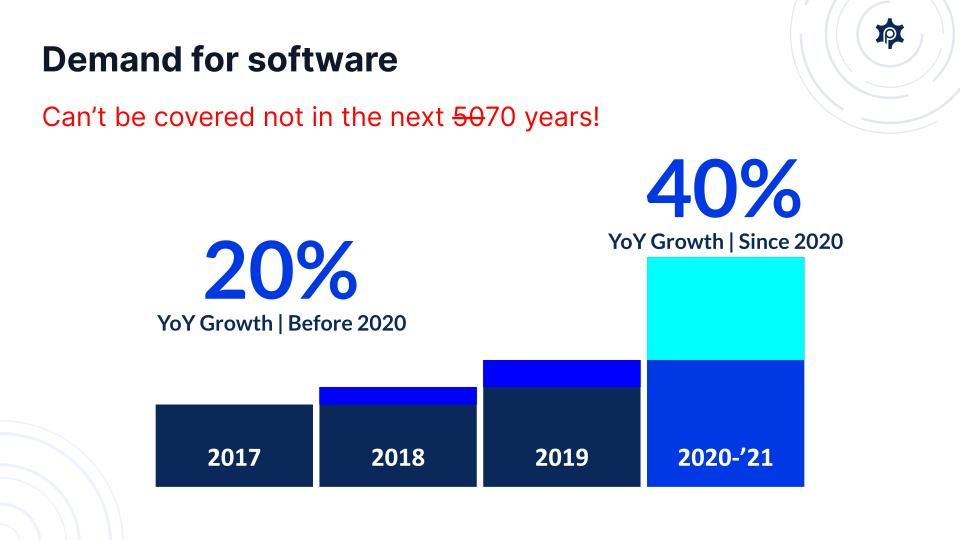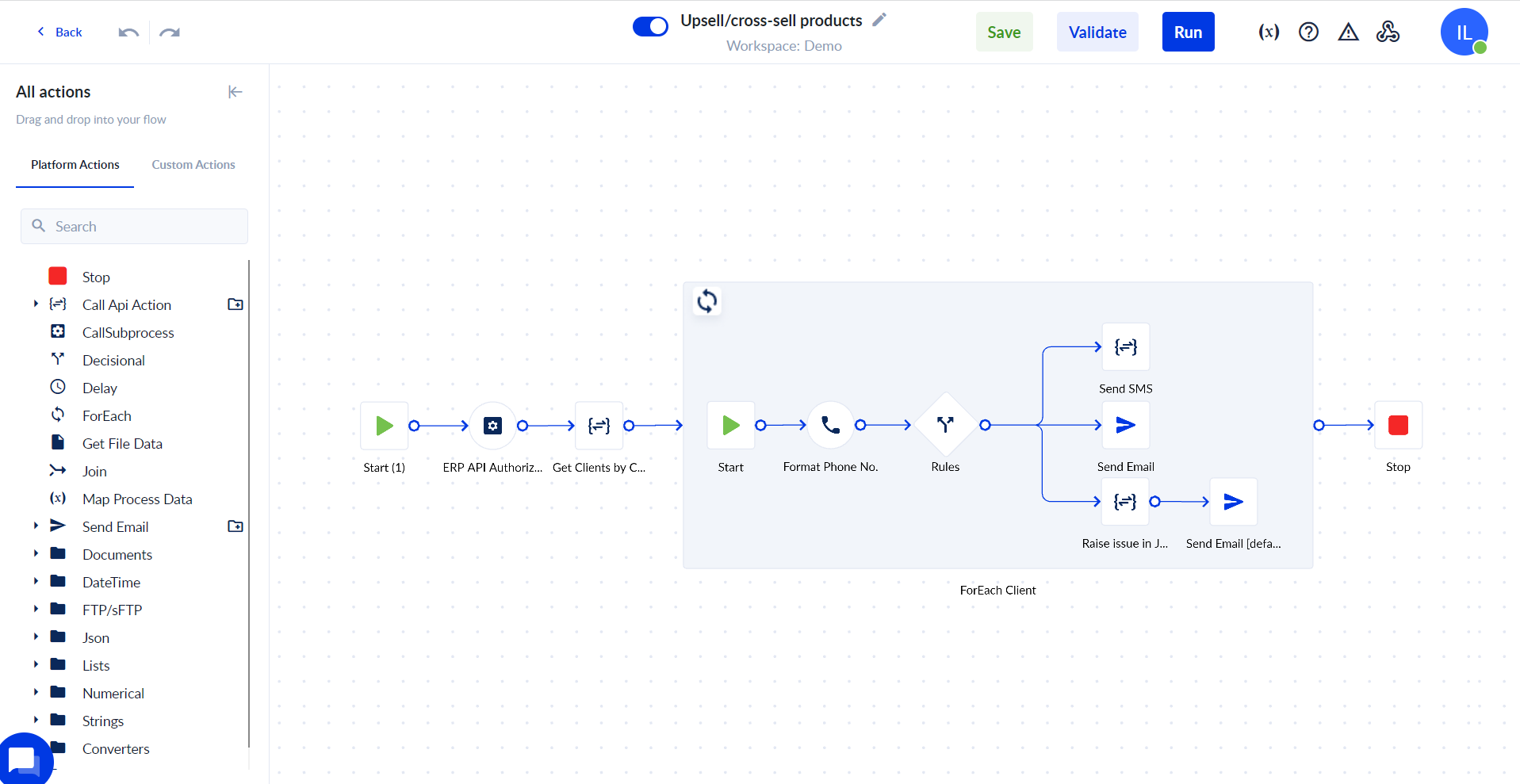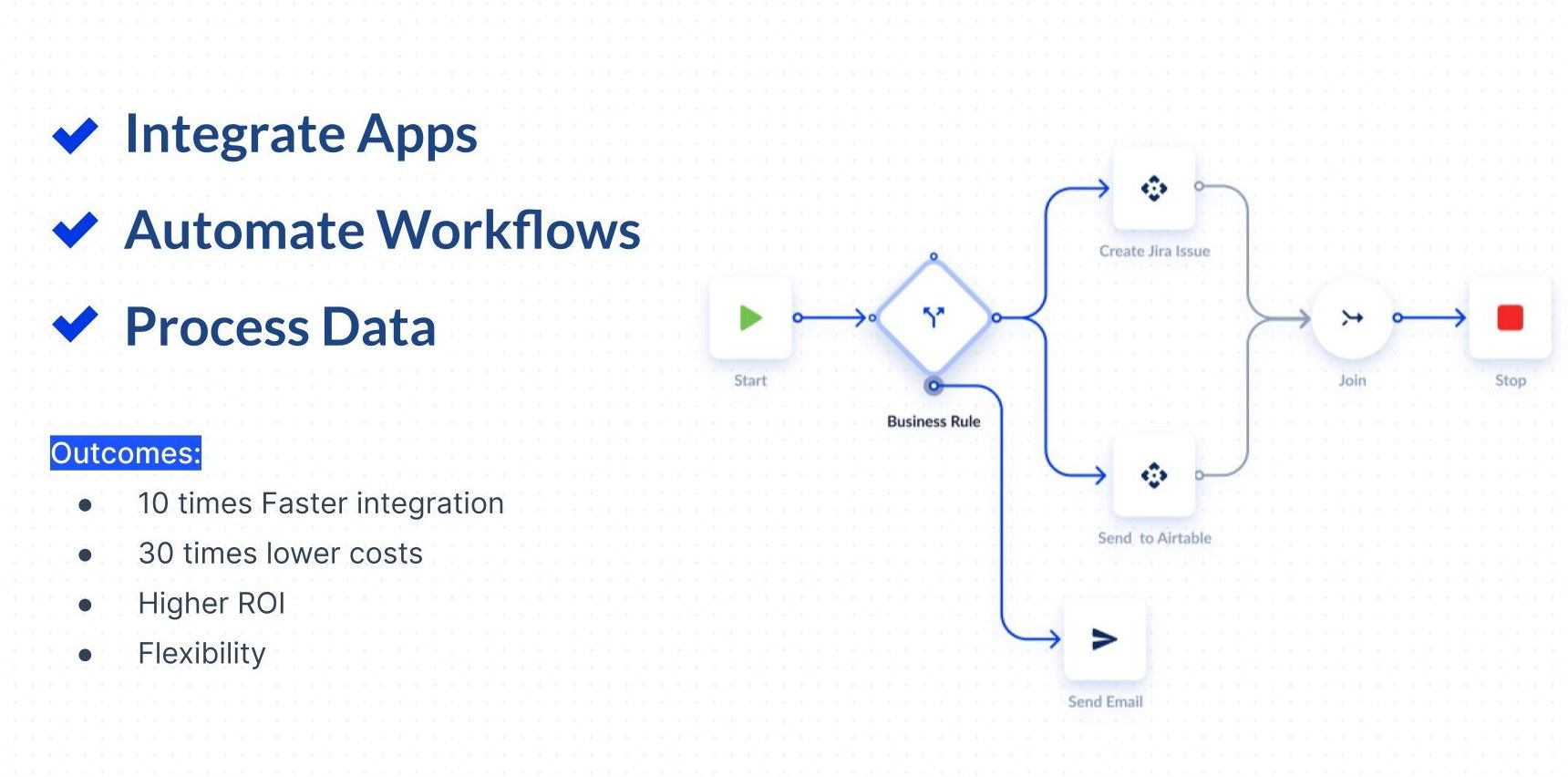Generally speaking, we make decisions for the future. We can’t make decisions in the past, although how many of us haven’t wished we could have returned in the past to make better decisions in some situations.
Similarly I could ask, how many of us don't wish we could look into the future and know that the decisions we’re taking now will be the right ones, or know what our decisions will lead to.
Things are not that much different in the software world. We have to make the right decisions in terms of architecture, and pick the right tools to work with so that we pave the ground for good returns in the future.
A few words about me: I’ve been active in the energy industry for the past fifteen years, and for eleven years I’ve been working to automate the energy industry in Romania, especially on the commercial side. For the past four years I have been looking to predict how software development will look like in this field.
Digitalization is built on software. And software is built by people. But the truth is that only three in one thousand people are capable of writing software globally, which is very little.
In Europe and the US there are more than one million open software development jobs. In Romania, over 90% of SMEs are lagging behind with digitalization, and over 80% are reporting issues in this spectrum.
Experts estimate that using the currently available resources, it will take us around 50 years to deliver on the market software demand.
Before the pandemic, software demand increased by 20% every year, and after the pandemic by 40%. Taking into account that the number of developers has not increased in the same rhythm, I would argue that it will actually take us as much as 70 years to cover the demand for software!

Better results through automation
So why do we need software, digitalization, people that can build these things? From my point of view, the answer is simple: results.
Companies don’t need digitalization, they don’t need software. They need results. And results imply something more qualitative, faster, and cheaper.
The problem here is that reality tells us that cheaper and more qualitative is usually slow, qualitative and faster is expensive, and faster and cheaper is lower quality.
You can't have all at the same time, so if companies need more software, which requires more development resources, we can offer them a solution by providing quality faster, not at a cheaper price, but at the right price, an affordable price, through automation.
A no/low-code approach
These days companies are using multiple software platforms at the same time, and to get the most of them, they need to make sure these platforms are connected and talking with each other.
Normally, the integration between these platforms is linear, from one system to another. In very few instances do companies actually use ESBs or similar technologies to facilitate holistic integration, and even if they do, only developers can actually employ it, which takes us back to the problem mentioned earlier.
Visual development with no/low-code is becoming more relevant day by day in this regard. That is because it allows a larger pool of people to build software, whether they are more or less technically-skilled.
Among the main advantages of no/low-code development we can mention:
- the possibility to involve teams other than IT to build automation
- robustness and ease in altering and maintaining applications
- flexibility in managing complex projects
- higher productivity output and a faster response to market changes
Our solution with PROCESIO, a tool to integrate apps, automate flows, and extend current software functionalities using a no/low-code approach, enables companies to develop apps up to 10x faster than by traditional techniques.

As an industry-agnostic tool, PROCESIO allows to build automation in a variety of scenarios and niches.
Operations professionals or business analysts can design, test and implement the workflows they need without having to rely on development support.
At the same time, developers can use the tool to accelerate their production capacity without having to code every piece of software from scratch. Instead, they can focus their energy on innovation and tasks that truly challenge their skills and abilities.
Having a strong background in energy and utilities, we have elaborated on a few preliminary workflow automation use cases in this field, helping our current customers to upgrade the way they handle processes, and eliminate unnecessary, repetitive, manual work:
- Automating billing processes
- Changing providers
- Advanced hardware service
- Using weather information for running equipment and tasks
Other uses cases that have general applications in different departments and industries include:
- Removing data silos and syncing data between systems
- Manipulating and deduplicating data
- Generating documents and messages from templates
- Reducing customer churn rate
- Automating customer onboarding
Systems and data integration and automation through no/low-code can prove very useful in highly competitive business environments, without breaking the bank.
A reliable no/low-code platform will empower you to build complex flows in a secure and scalable environment, without giving you headaches about future changes in the software landscape.
Would you like to learn more how you can empower your business and technical teams to build custom software and workflows up to 10x faster than by writing code? Open an account or contact us and start building today!

